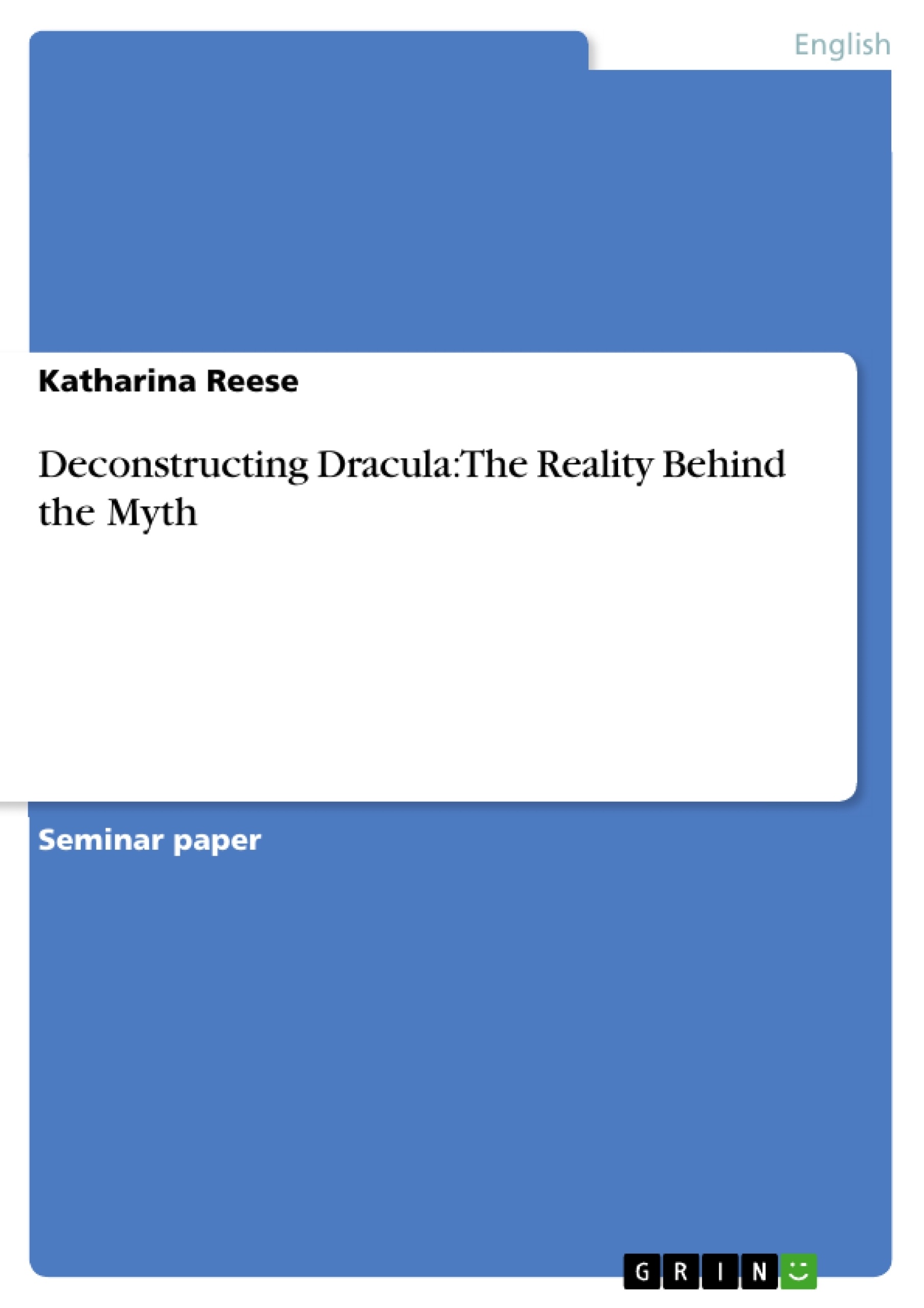When we hear the name “Dracula”, nearly everybody in our society today immediately thinks about vampires, horror and Transylvania. The material has been commercialized throughout the last century, dozens of different films and theatrical versions have been brought to life which concern themselves with the history of the dark count, the king of all vampires. The actual story is hereby often distorted, the themes of the novel forgotten and the material reduced to often rather cheap horror stories without the deeper aspects of repressed female sexuality or the threat of modernity that critics have dealt with so often. But what are the actual themes of the novel? In the following I want to explore some of the themes, taking into consideration a few papers by contemporary scholars, and then have a look at how far those themes have actually been constructed.
And I want to start out by making the rather extreme claim, that there is no Dracula at all in the novel. What I mean by that will become obvious in the progress of my argument.
Inhaltsverzeichnis (Table of Contents)
- Deconstructing Dracula: The Reality Behind the Myth
- The Female Sexuality as a Threat?
- The Threat of Modernity
- Van Helsing: The Excorcist
- Conclusion
Zielsetzung und Themenschwerpunkte (Objectives and Key Themes)
This essay aims to deconstruct the popular image of Dracula as a simple horror figure and analyze its deeper themes, especially regarding female sexuality and the threat of modernity.
- The portrayal of female sexuality in the novel
- The inversion of Victorian gender roles
- The threat of modernity and its connection to the supernatural
- The characters of Van Helsing and Dracula as representatives of opposing forces
- The use of the vampire myth as a metaphor for societal anxieties
Zusammenfassung der Kapitel (Chapter Summaries)
The essay begins by examining the feminist interpretations of Dracula, focusing on the frequent portrayal of female vampires and the novel's exploration of female sexuality. The author argues that Dracula's seduction of female characters represents a subversion of Victorian gender norms, where women are expected to be passive and submissive. This analysis delves into specific passages like Jonathan Harker's encounter with the three female vampires, highlighting the sexualization of their depiction and the contrast between their active sexuality and the Victorian ideal of women. The essay further analyzes Lucy Westenra's character, contrasting her initial representation as a perfect Victorian woman with her eventual transformation into a seductress after being bitten by Dracula. The author also explores the role of Van Helsing as a figure representing a clash between traditional and modern forces, contrasting him with Dracula as a symbol of the threat of modernity.
Schlüsselwörter (Keywords)
The key concepts explored in this essay include female sexuality, Victorian gender roles, modernity, the supernatural, the vampire myth, and the characters of Dracula and Van Helsing. The essay analyzes how these concepts are intertwined to present a complex and nuanced understanding of the novel's themes.
- Arbeit zitieren
- Katharina Reese (Autor:in), 2009, Deconstructing Dracula: The Reality Behind the Myth, München, GRIN Verlag, https://www.grin.com/document/163261



